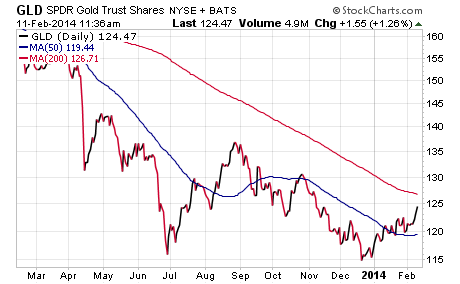Real Estate ETFs Are Smoking The Market This Year
Post on: 16 Март, 2015 No Comment

The real estate sector was hit hard by rising interest rates in 2013 and came into the year well below the radar on a pessimistic outlook when compared to high-growth stocks. Fears that higher mortgage rates would cool off real estate prices and stonewall cheap refinancing were certainly valid arguments six months ago. However, the combination of strong housing data, lower interest rates, and lower equity issuance in this space has translated into excellent outperformance in REITs to start 2014.
The iShares US Real Estate ETF (NYSEARCA:IYR ) is a broad-based measure of 101 domestic publicly traded REITs that has gained 7.97% this year through Friday’s closing price. Those gains are phenomenal when compared to the flat returns of the SPDR S&P 500 ETF (NYSEARCA:SPY ) over the same time period. In addition, investors in IYR benefit from a yield of 3.71% which is more than double the 1.83% yield on SPY.
Fund flows have played a big part in the resurgence of momentum in this sector. According to recent ETF.com data, the Vanguard REIT ETF (NYSEARCA:VNQ ) is topping the list as the number-one ETF for net new inflows in 2014 by attracting an additional $1.97 billion in assets. IYR has also grossed over $700 million of its own this year.
Another boost to this sector has been a 13% fall in the CBOE 10-Year Treasury Note Yield (INDEXCBOE:TNX) which began the year near 3% and is currently trading close to 2.64%. The real estate sector is often closely tied to the movement of interest rates because so much financing activity occurs in conjunction with commercial and residential transactions.
An ETF that relies heavily on lower interest rates is the iShares Mortgage REIT Capped ETF (NYSEARCA:REM ), which invests in a portfolio of mREITs that seek to borrow short-term debt and purchase longer-duration mortgage securities using leverage. In this manner, they can magnify their yields and returns to shareholders above a traditional pool of mortgage bonds. However, the use of leverage can also be a double-edged sword that magnifies volatility and increases a number of fixed-income risks. REM has gained over 11% this year and currently sports a 30-day SEC yield of 10.77%.
One uncharacteristic area of weakness related to real estate is the SPDR S&P Homebuilders Index (NYSEARCA:XHB ), which is a concentrated portfolio of construction and consumer products stocks tied to the housing industry. Homebuilders have been plagued by weather concerns and other slowing-growth factors that have capped their upside participation in this rally. In order for XHB to break out of its current slump, we are going to need to see further support for housing data as well as a return of consumer demand as the snow thaws this spring.
I like REITs because they offer attractive yields with an alternative asset class that can produce excellent returns in this type of stable-interest-rate environment. However, the downside is that they are susceptible to declines if we get back into another rotation of higher interest rates and weakening housing data. One final option for conservative investors to consider is the Fidelity Real Estate Income Fund (MUTF:FRIFX ) which is an actively managed fund that invests in a diversified mix of REITs and mortgage related fixed-income securities. I own this fund for my income clients as a balanced way to play the real estate sector and enhance my portfolio yield.
Read more from David Fabian, Managing Partner at FMD Capital Management:














